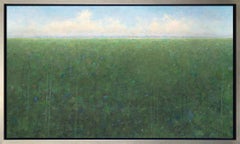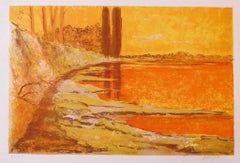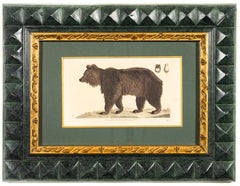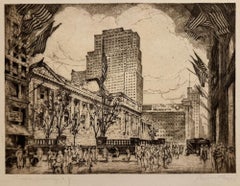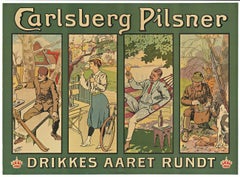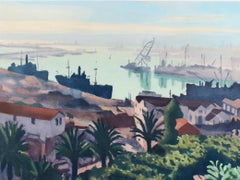Horizontal Landscape Prints
2010s Abstract Abstract Prints
Digital, Giclée
1970s Modern Landscape Prints
Lithograph
Early 19th Century Naturalistic Animal Prints
Color
1920s American Modern Landscape Prints
Archival Paper, Etching, Aquatint
Early 1900s Art Nouveau Portrait Prints
Lithograph
1940s Expressionist Landscape Prints
Lithograph
1920s American Modern Landscape Prints
Drypoint, Etching
1980s Contemporary Landscape Prints
Etching
2010s Pop Art Still-life Prints
Tar, Screen
1970s Expressionist Figurative Prints
Lithograph
Late 19th Century American Realist Animal Prints
Laid Paper, Etching
Late 20th Century Abstract Expressionist Landscape Prints
Giclée
Mid-20th Century Modern Landscape Prints
Lithograph, Woodcut
16th Century Old Masters Landscape Prints
Engraving
Late 20th Century Expressionist Figurative Prints
Lithograph
1880s Landscape Prints
Etching
1960s Abstract Expressionist Abstract Prints
Screen
1970s Pop Art Landscape Prints
Screen
1840s Realist Landscape Prints
Lithograph
2010s Realist Landscape Paintings
Paper, Emulsion, Lithograph
1920s Impressionist Landscape Prints
Etching
1970s Modern Figurative Prints
Etching
21st Century and Contemporary Contemporary Color Photography
Archival Ink, Archival Paper, Photographic Paper, Giclée
1960s Surrealist Landscape Prints
Etching, Aquatint
1940s Modern Landscape Prints
Lithograph
1750s Figurative Prints
Etching
1910s Landscape Prints
Woodcut, Drypoint
21st Century and Contemporary Contemporary Color Photography
Archival Paper, Photographic Paper, Archival Pigment, Giclée
1970s Landscape Prints
Lithograph
Early 1900s Modern Landscape Prints
Woodcut
21st Century and Contemporary Contemporary Black and White Photography
Archival Paper, Photographic Paper, Giclée, Archival Pigment
2010s Realist Landscape Prints
Paper, Archival Paper, Color, Digital, Giclée
1770s American Impressionist Landscape Prints
Engraving
20th Century Folk Art Figurative Prints
Lithograph
21st Century and Contemporary Contemporary Color Photography
Archival Paper, Photographic Paper, Archival Pigment, Archival Ink, Giclée
1950s American Realist Portrait Prints
Offset
Late 19th Century Victorian Landscape Prints
Lithograph
1990s Contemporary Photography
Silver Gelatin
1930s American Modern Figurative Prints
Drypoint, Etching
1980s Abstract Geometric Abstract Prints
Screen
1960s Modern Landscape Prints
Lithograph
1970s Animal Prints
Lithograph
2010s Contemporary Landscape Prints
Paper, Printer's Ink, Archival Paper, Giclée, Color, Digital
1980s Art Deco Interior Prints
Screen
2010s Realist Landscape Prints
Paper, Board, Color, Digital
1920s Showa Landscape Prints
Woodcut
1910s Fauvist Landscape Prints
Woodcut
1980s Impressionist Landscape Prints
Lithograph
Mid-20th Century Landscape Prints
Sumi Ink, Washi Paper
1960s Modern Landscape Prints
Lithograph
Mid-19th Century Naturalistic Animal Prints
Lithograph
1960s Modern Landscape Prints
Lithograph
1980s Contemporary Figurative Prints
Screen
2010s Contemporary Animal Prints
Screen
1970s Contemporary Landscape Prints
Offset
1970s Surrealist Landscape Prints
Screen
20th Century Realist Animal Prints
Etching
Mid-17th Century Old Masters Landscape Prints
Laid Paper, Engraving
Early 20th Century American Realist Landscape Prints
Laid Paper, Etching
Early 20th Century American Realist Landscape Prints
Drypoint, Etching
